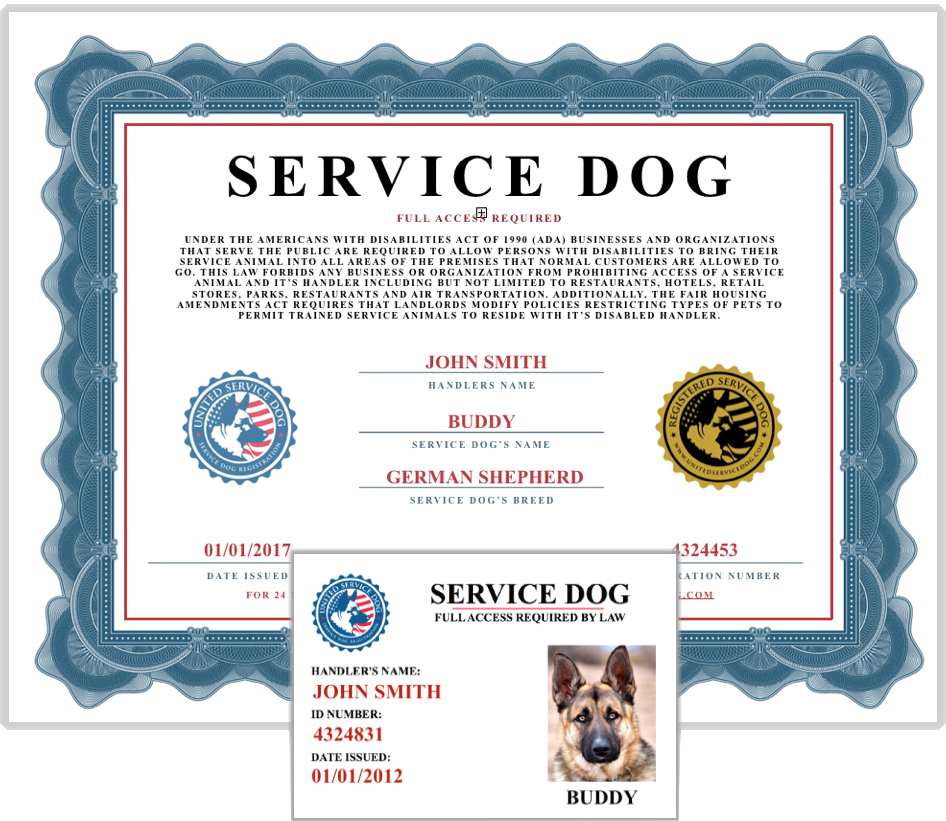Valid In All 50 States
& Puerto Rico
24/ 7 Online
Verification Portal
Free shipping available!
Includes
ID Card and Certificate!
Full access everywhere
with no fees!







INCLUDES ID CARD
& REGISTRATION CERTIFICATE

24/7 ONLINE VERIFICATION

FREE SHIPPING AVAILABLE

NO EXTRA AIRLINE PET FEES

NO EXTRA PET DEPOSITS

NO EXTRA PET RENT

It is important to register your dog so you can easily inform others that your dog is not a pet, but a working service dog . Along with our quick and easy service animal registration process, we offer a variety of accessories including high quality leashes and vests your dog should wear to restaurants, hotels, apartments and airports. Wearing these items at all times while out in public will help others identify your service dog and can save you hundreds of dollars in “Pet Fees” each year.
Receive an Evaluation from a Licensed Mental Health Professional









